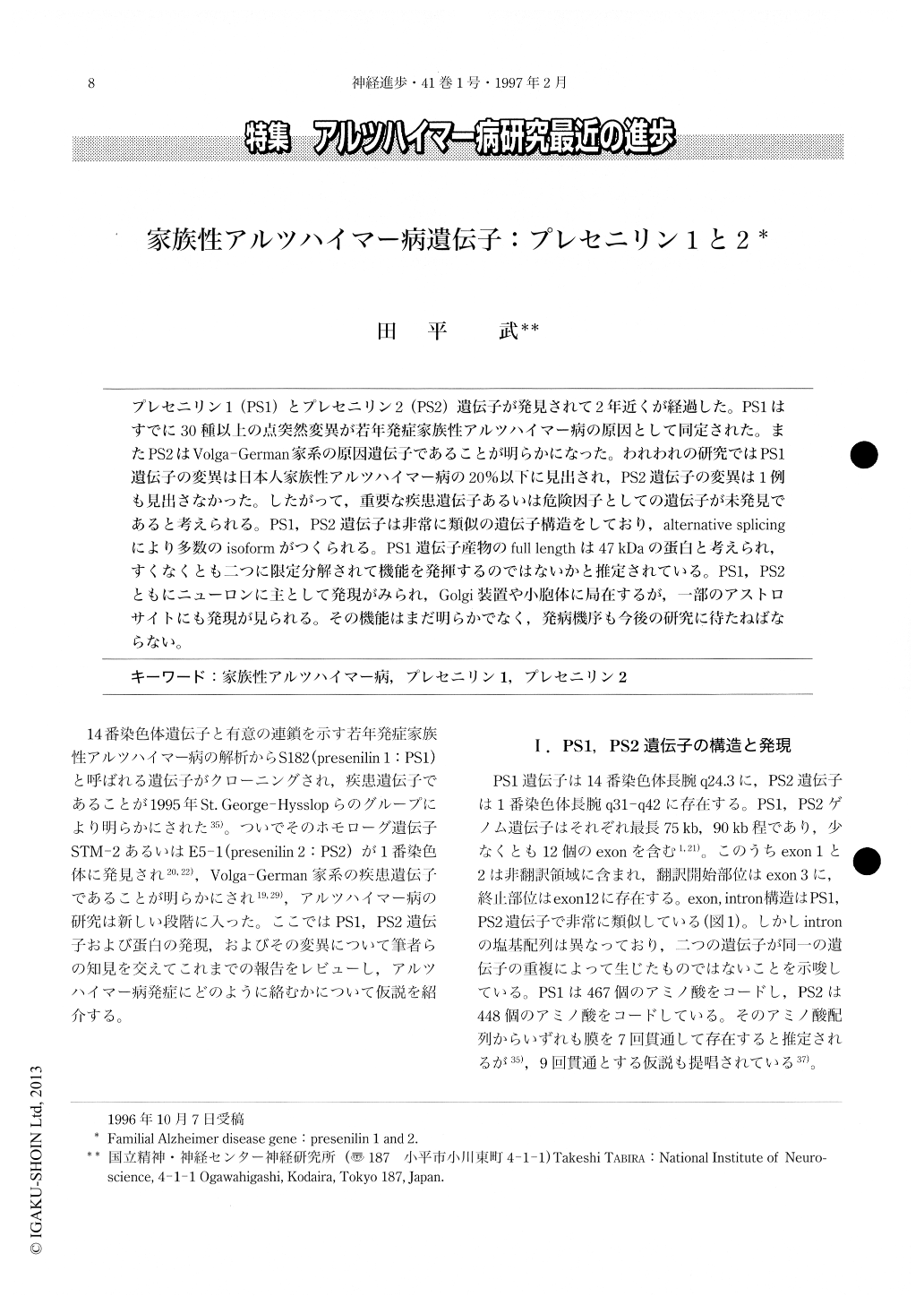Japanese
English
- 有料閲覧
- Abstract 文献概要
- 1ページ目 Look Inside
プレセニリン1(PS1)とプレセニリン2(PS2)遺伝子が発見されて2年近くが経過した。PS1はすでに30種以上の点突然変異が若年発症家族性アルツハイマー病の原因として同定された。またPS2はVolga-German家系の原因遺伝子であることが明らかになった。われわれの研究ではPS1遺伝子の変異は日本人家族性アルツハイマー病の20%以下に見出され,PS2遺伝子の変異は1例も見出さなかった。したがって,重要な疾患遺伝子あるいは危険因子としての遺伝子が未発見であると考えられる。PS1,PS2遺伝子は非常に類似の遺伝子構造をしており,alternative splicingにより多数のisoformがつくられる。PS1遺伝子産物のfull lengthは47kDaの蛋白と考えられ,すくなくとも二つに限定分解されて機能を発揮するのではないかと推定されている。PS1,PS2ともにニューロンに主として発現がみられ,Golgi装置や小胞体に局在するが,一部のアストロサイトにも発現が見られる。その機能はまだ明らかでなく,発病機序も今後の研究に待たねばならない。
Since the discovery of presenilin 1 (PS1) and presenilin 2 (PS2) genes, about 2 years has passed. Over 30 point mutations in PS1 gene were found in early onset familial Alzheimer's disease families in the world, and a mutation of PS2 was found in the Volga-German family. However, in our studies, PS1 mutations were found in less than 20% of Japanese families of Alzheimer's disease, and none was shown to have mutations in PS2. Therefore, important causative or risk factor genes are still missing. PS1 and PS2 genes are very homologous, and numerous isoforms are produced by alternative splicing. The full length protein of PS1 is 47 kDa protein and it is supposed to function after cleavage into two fragments. Both PS1 and PS2 are expressed mainly in Golgi and ER of neurons, but a part of astrocytes that surround vessels and senile plaques also contain this substance. It is still immature to know the function of PS1 and PS2, and the pathomechanism of Alzheimer's disease due to mutations of these genes is still unknown.

Copyright © 1997, Igaku-Shoin Ltd. All rights reserved.


